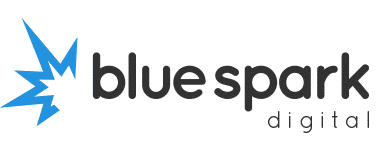How Long Should It Take to Build a Website? A Plain-English Timeline
You’ve decided your business needs a new website. Maybe it’s a redesign. Maybe it’s your first proper online presence. You’re ready to go.
But then you ask: “How long will it take?”
And you get a very unsatisfying answer: “Well… it depends.”
Let’s fix that.
Here’s a straight-talking guide to how long it really takes to build a website – what affects the timeline, what slows things down, and how to make sure your project moves smoothly from start to finish.
Why “It Depends” Is Actually True
It’s not a cop-out – it really does depend. Building a website isn’t like assembling IKEA furniture. Every project is different, depending on things like:
- How many pages you need
- Whether it’s a redesign or a fresh build
- Who’s providing the content and images
- What kind of features you want (booking system, blog, online shop, etc.)
- How quickly feedback and decisions are made
- Whether there’s a clear goal and plan from day one
That said, here’s a typical timeline based on how I work with small businesses across Hampshire and Surrey.
Typical Website Project Timeline (Start to Launch)
Week 1: Discovery & Planning
We chat about your business, your goals, your audience, and your current site (if you have one). This is where we figure out what you need and why you need it.
Deliverables:
- A clear project scope
- Agreed sitemap (what pages you’ll have)
- Timeline
- Proposal and quote
Week 2–3: Content Gathering
You either:
- Send me your content (text, images, etc.)
- Or we collaborate to write/edit it together
This bit often causes the most delays. The faster we get good content, the faster the site moves forward.
Tip: Don’t wait until the design is ready to start writing your content – start early!
Week 3–4: Design & Layout
I create a homepage layout first, based on your branding, goals, and the kind of user journey your visitors need. Once approved, I roll that style out across the rest of the site.
If you’re using WordPress, I build flexible content blocks so you can move things around easily later.
Week 4–5: Development
The site gets built behind the scenes – usually on a staging server so you can preview it without going live. This includes:
- Responsive layout (mobile/tablet/desktop)
- Speed and performance optimisation
- SEO basics (headings, metadata, structure)
- Any forms or integrations needed
Week 5–6: Feedback & Revisions
You review the site, test the pages, and suggest changes. This is where we tweak wording, adjust images, refine layout details and make sure it’s just right.
We keep things structured so this doesn’t drag on for weeks.
Week 6: Go Live
Once you’re happy, we launch.
This includes:
- Redirects from old pages (if needed)
- Connecting your domain name
- Testing contact forms
- Submitting the site to Google
- Setting up Google Analytics / Search Console if needed
You’re now live – with a site that’s fast, mobile-friendly and ready to bring in business.
What Can Slow Things Down?
Let’s be honest – most delays don’t come from the tech. They come from people. Here’s what usually causes projects to stall:
- Delays in content
- Unclear decision-making (e.g. “I need to ask my business partner”)
- Scope creep (“Can we just add a booking system and three more pages…?”)
- Trying to copy five different websites at once
- Perfectionism that leads to endless small edits
That’s why I keep everything transparent, simple, and focused from the start – to avoid that “never-ending project” trap.
Can a Website Be Built Faster?
Yes – with a streamlined plan, good content from the start, and clear goals, I’ve launched websites in under two weeks.
But speed only works when we’re on the same page. Rushing things without clarity can lead to a site that looks fine but doesn’t actually perform.
So yes, we can move quickly – but always with purpose.
How You Can Help Speed Things Up
Want to make sure your site’s done on time (or early)? Here’s what helps:
- Be clear on what you want the site to do
- Have your content ready early
- Appoint one main contact for feedback
- Group your edits into rounds, rather than drip-feeding
- Trust the process and your designer (I’ve got your back!)
What You Can Do Next
If you’ve been putting off your website because you’re worried it’ll take forever, let’s talk. I’ll walk you through how long your project is likely to take – with zero pressure.
I’ve helped plenty of businesses go from “we need a new site” to “we love our new site” without dragging things out for months.
You bring the business. I’ll bring the plan.

